Almost all industries except healthcare have raised the bar for consumer experience. Medical providers that close this gap the fastest, will gain a huge competitive advantage. But no one ever said it would be easy!
Squeezing ever more patients into doctors’ schedules, staying economically viable, and simultaneously improving the healthcare experience for people is a daunting task. That is why you need all kinds of tools that will help you stay on top of doctor-patient relationships and personalization of your services.
In this article, we’ll take a close look at healthcare CRM software and all the ways it can aid your practice in becoming more patient-centered. But before that, let’s get some important definitions out of the way.
The Objective of a CRM System in the Healthcare Industry and How it is Different from EHR
The industry is overloaded with acronyms, don’t you agree? And whatever they signify, be it a software solution or governmental program, each of them is said to be the next best thing.
Wasn’t EHR (Electronic Health Records) supposed to solve all your organizational troubles? Now they say you also need a CRM for healthcare. Why and how is it different from EHR? That’s what we’ll address here.
The main difference is that EHR systems are created to accommodate patients only when they are at your facility, while medical CRM attempts to capture their entire medical journey.
Your goal is to provide good service to people who come to your clinic, this is what EHRs are designed for. They’ll provide you with a medical history, medical charting functionality, prescription suggestions, and even diagnosis.
We cannot forget, however, that every patient’s journey usually starts before the visit and may continue long after it. There is an awareness stage when a patient experiences symptoms but doesn’t know there is a problem, yet. Then there are stages like getting the right diagnosis, finding the appropriate treatment, following the regimen, and adjusting treatment. Ideally, the journey will conclude with a cure. Sometimes, however, it may continue with a relapse stage.
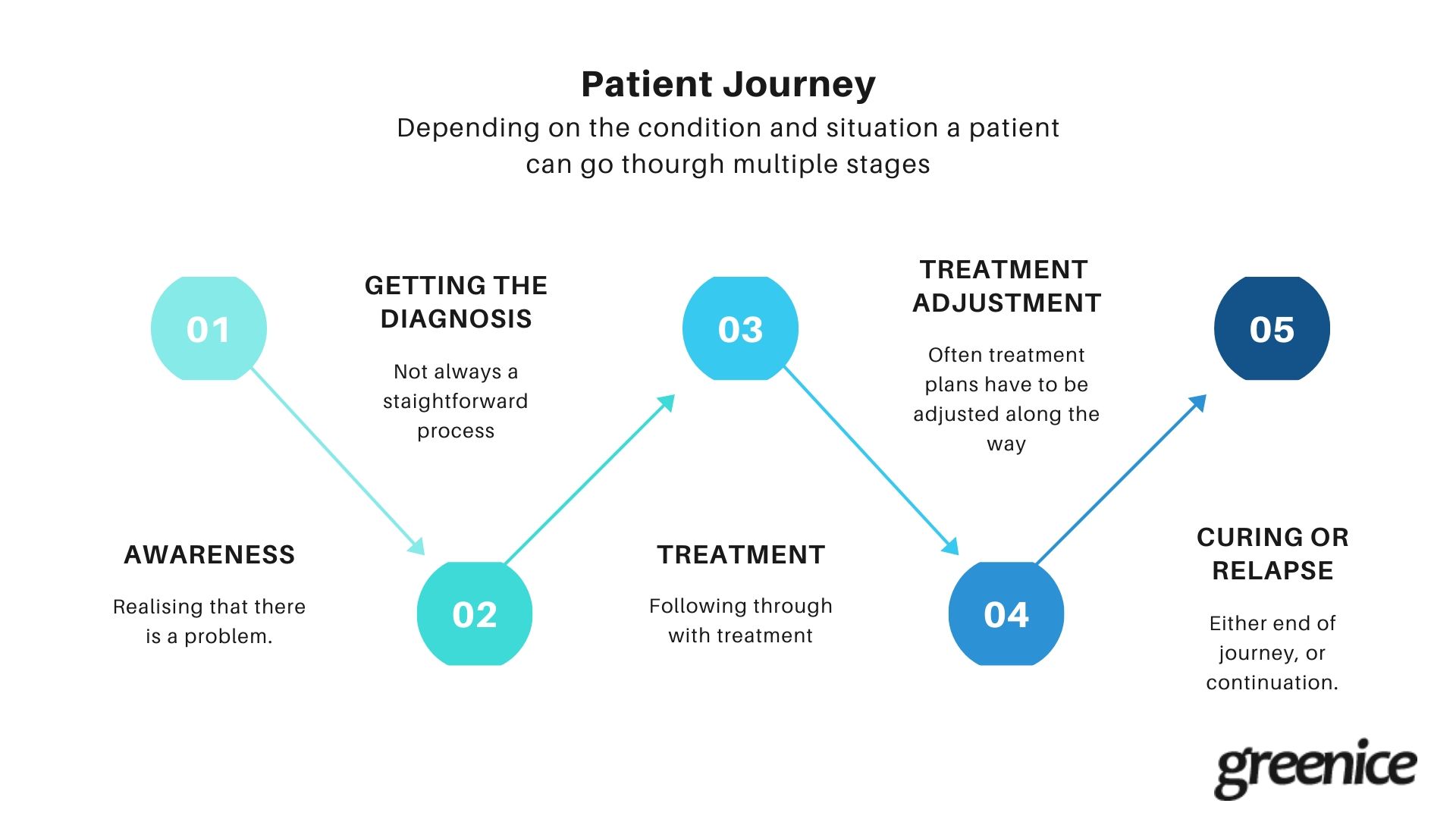
What happens in-between the doctor visits is just as important as during them. Think of all the negative consequences a patient might endure if he doesn’t follow your instructions. Approximately 125,000 people die in the US every year because they do not follow their doctor’s directives. Thus, the main goal of CRM in the healthcare industry is to assist patients throughout their entire journeys.
This solution can help you educate your patients at the awareness stage, tailor your services to their needs and preferences, streamline doctor-patient communication, and much more. Some of the features this software will provide are:
- A 360⁰ view of the patient
- Segmentation functionality
- Email campaigns
- Various communication channels
- Satisfaction surveys and more.
Now that you know the difference between an EHR and CRM, it is also worth mentioning that you don’t need to choose between them, but rather use them both, in collaboration with each other. In other words, EHR and medical CRM have to be integrated in order to share valuable information about consumers.
Top 5 Reasons To Develop A Medical CRM
Unfortunately, CRM is not a magic pill. It cannot make your practice patient-centric all by itself. Nevertheless, this powerful tool can make an individualized approach more feasible for you.
Here are the top reasons for building healthcare CRM software:
- Attract new patients
- Tailor your service to patients
- Manage doctor-patient relationships
- Engage patients
- Measure patient satisfaction
Now, we’ll go over each of these in detail.
1. Attract new patients
If you are in a highly competitive healthcare specialty, you know what it’s like to fight for patients. This software can help you find new clients in a number of ways.
- Referral management (eReferrals)
Each year over a third of Americans who go to see their primary care doctor get referred to a specialist. This makes referrals a critical lead-generation channel.
Referral management is a hassle: data can be lost, appointments can be delayed or even forgotten.
eReferrals can be part of a medical CRM that helps you receive referrals from other providers. You can get the required patient information and automatically notify individuals about their appointments.
- Targeted email campaigns
You can use CRM to attract new patients via targeted drip campaigns. By targeted, we mean aimed at very specific groups of people. And by a drip campaign, we mean a set of automated emails with content designed to suit targeted groups.
You can target people at different stages in the patient journey. Either in the early stages of becoming aware of the problem or risk, or later on, when searching for treatment options.
The biggest potential is often in reaching out to prospective patients who are in the awareness stage. A good example of this is when a pediatric center targets soon-to-be moms and new moms. They send useful content to these women that is most relevant to their current life situation, such as breastfeeding tips, child development stages, and so on. Such campaigns can be a great way to get in front of potential customers and to earn their trust with expert information.
2. Tailor your services to individual patients
The ‘one-size-fits-all’ approach is long forgotten in the world of consumer products and services. From customized coffee to running shoes, as consumers, we have been enjoying mass customization for a while now.
But not in healthcare! We rarely get the luxury of tailored services in hospitals. Even though there are exceptions, for one reason or another, the cookie-cutter approach is still prevalent at the doctor’s office.
Nonetheless, if leading consumer companies have proved that customization leads to greater customer satisfaction and financial gains, the same should be true for healthcare. Research shows a direct link between a tailored approach and patient contentment, and better outcomes.
One of the ways to ‘automate’ an individual approach is with segmentation. Industry experts suggest the following sequence of steps:
- Identify the target population
- Choose relevant criteria
- Segment
- Tailor treatment into packages (plans)
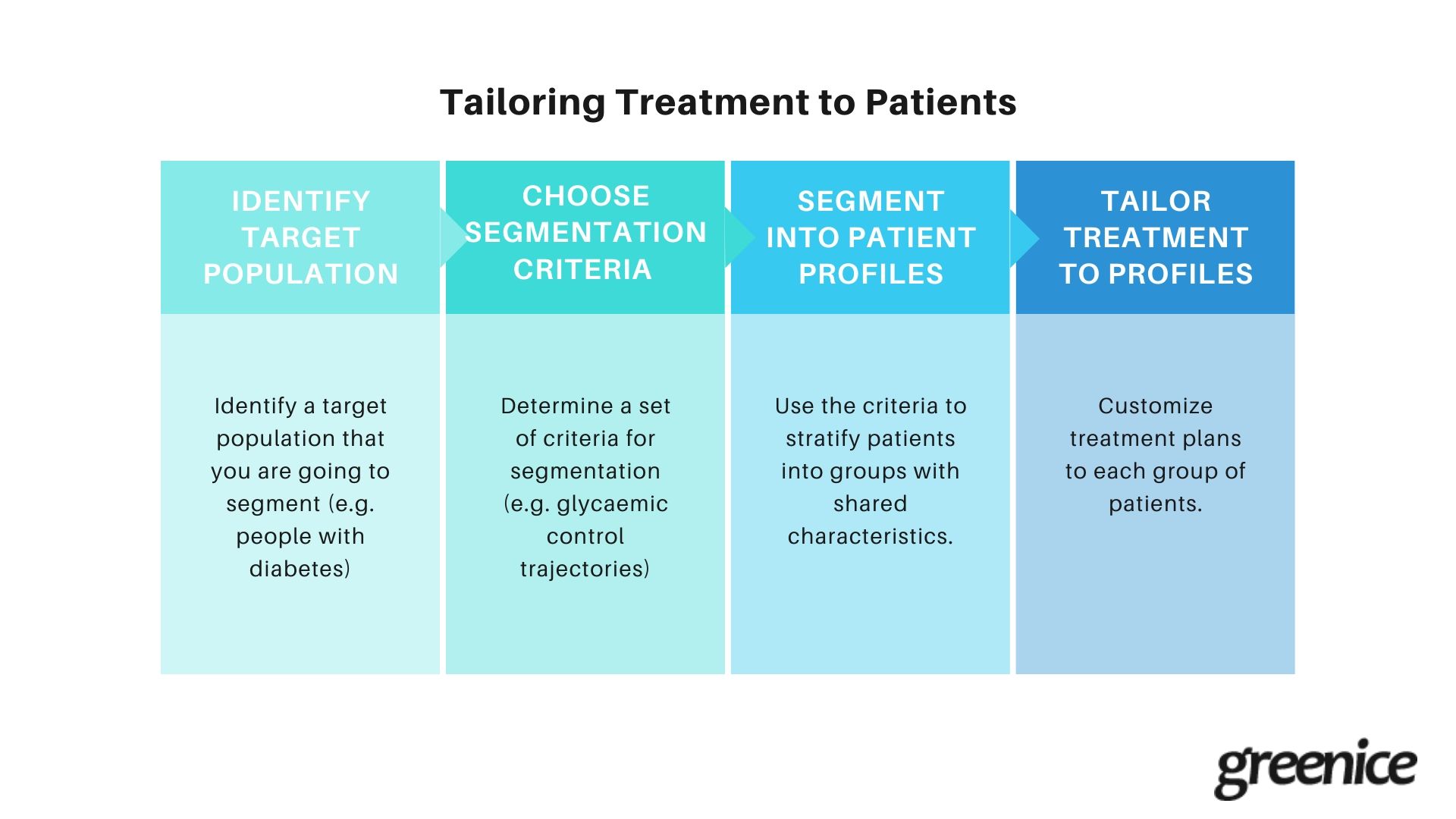
Since your CRM will give you a 360⁰ view of patients, it is a good basis for segmentation. This data can be pulled from your EHR, your partners, and referrals (e.g. primary care providers).
The biggest challenge in patient profiling lies in the criteria choice and segmentation methodology. At the moment, this is left for each provider to determine on their own. To illustrate this, here is an example of different segmentation criteria that were used for two target populations - people with diabetes and individuals who went through joint replacement surgery. The researchers differentiated between diabetes patients based solely on their glycaemic control trajectories, while with joint replacement patients, the researchers used a variety of criteria. The criteria included preferred means of communication, experiences with pain and stress, disease management abilities, clinical symptoms, and surgical results.
No matter what segmentation approach you choose, it should help you create treatment packages that will satisfy your clients and improve results.
3. Manage doctor-patient relationships
Doctor-patient relationships largely involve the ability to communicate, and the capacity to empathize. The lack of a meaningful relationship between doctor and patient was proven to lead to poor recovery. While good relationships, on the contrary, correlate with improved healthcare such as relief of symptoms, reduction in the number of readmissions, and better disease management.
While hospital CRM software won’t help you with empathy, it can help you efficiently build and manage relationships with your consumers by providing:
- A ‘complete picture’ and
- Convenient communication channels.
And here is how…
- 360⁰-degree view of the patient
At the core of any kind of CRM is a vast database that provides as much useful information about the subject in question as possible. With a good CRM, the doctor can have all the necessary information at their fingertips.
With patient CRM, this information can be pulled from your EHR, as well as your referrals and partners.
- Communication
Another way to facilitate communication with patients outside the office, and make the doctor’s life easier, is the use of emails and messengers. These communication means become especially valuable when they are a part of the patient relationship software. This can be as simple as integrating your email with a CRM or as complex as a built-in messenger or email.
First of all, people will be grateful for being able to reach out directly to you with as little friction as possible. This will help them get important answers and follow the doctor’s instructions.
Secondly, it is super convenient to see the history of all interactions with a patient attached to his/her profile in the system, rather than switching back and forth between various communication channels and apps.
Of course, with whatever method you choose you should first and foremost ensure HIPAA compliance.
4. Engaging patients
Evidence suggests that the more a person is involved in his or her healthcare, the better the outcomes. Being healthy is not a passive act, it requires education and personal participation action from the patient.Therefore, medical organizations are trying to find the best ways to involve patients in their healthcare.
Here are just a few examples of the myriad of tools available to involve patients in the healthcare process:- Patient portals
- Targeted email campaigns
- Notifications
- Trackers
- Postoperative care apps
Whatever the tool, the emphasis is on educating and empowering people. Patient portals and drip campaigns can be great at providing relevant information and useful recommendations concerning their condition. Notifications are great at reminding clients about follow-up visits, important milestones, prescription refills, etc.
Trackers can help identify important patterns over time or follow through with the necessary behavior changes. For example, we’ve developed a home exercise program software for physical therapists that also has a simple tracker. Patients use it to monitor the completion of their rehab ‘homework.’ Other examples of medical trackers are glucose trackers for diabetes management, and mood and addiction trackers for mental health.
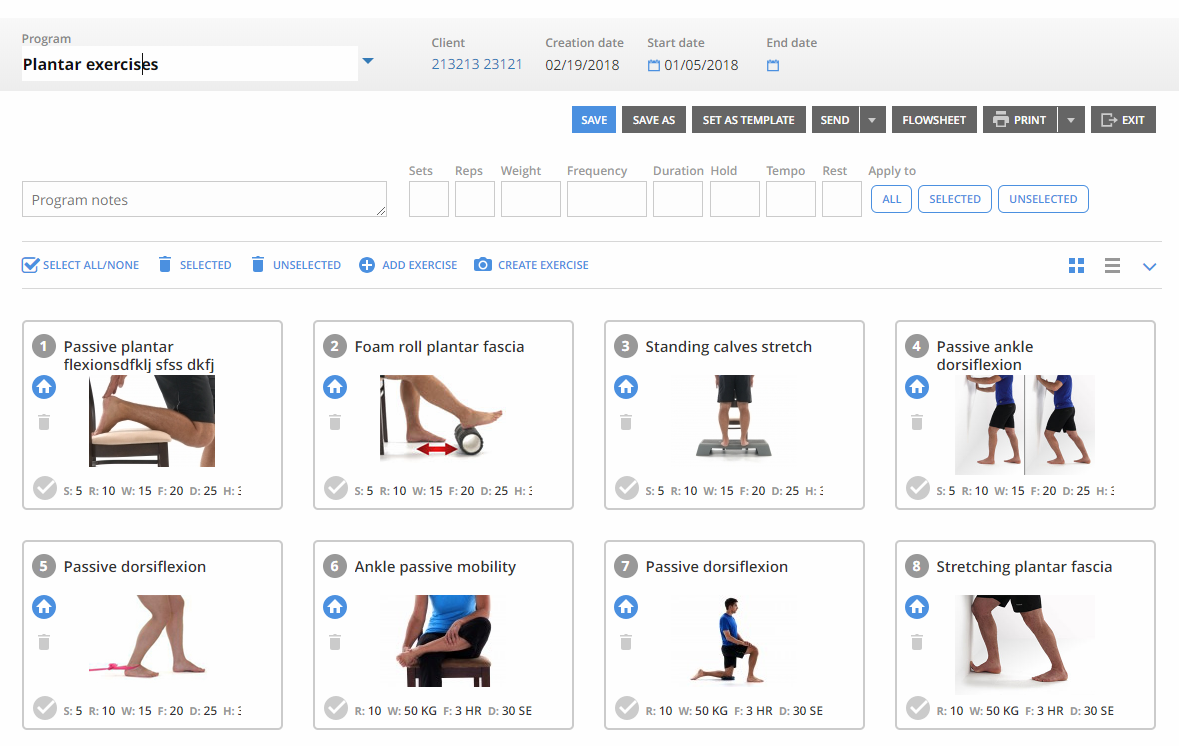
As for post-surgery apps, hospitals use them to reduce the time people stay in the hospital, while at the same time ensuring a full recovery. Patients report daily symptoms and take pictures of the wounds, which helps to catch any complications early on.
Why are we mentioning all of this in this article about medical CRM? Because you can realize the full potential of patient engagement tools only if they are all linked to, and integrated with, the patient profile in your CRM. Otherwise, it will be impossible for a doctor to use them and create a consistent feedback loop with the patients.Want to gather as much information about your patients as possible in your CRM?
Contact Us5. Measuring patient satisfaction
Only providers that systematically and accurately measure patient satisfaction can call themselves patient-centered.
Oddly enough, for a long time, doctors were the ones to measure patient satisfaction purely from their point of view and then everyone was surprised that it didn’t correlate with health outcomes. Research has shown that only patients themselves can determine whether they are satisfied with the care they’ve received from a provider. And, not surprisingly, the patients’ perception of care quality does correlate with the treatment results. The results include faster recovery, a better emotional state, and fewer diagnostic tests and referrals.
In addition, patient satisfaction data is invaluable in improving a medical organization and becoming more competitive.
The good news is that it is not difficult to collect this data. Simply send your customers satisfaction questionnaires via their preferred channel of communication and collect feedback.
Here is an example of a patient satisfaction questionnaire that we’ve developed as a part of a CRM for mental health.
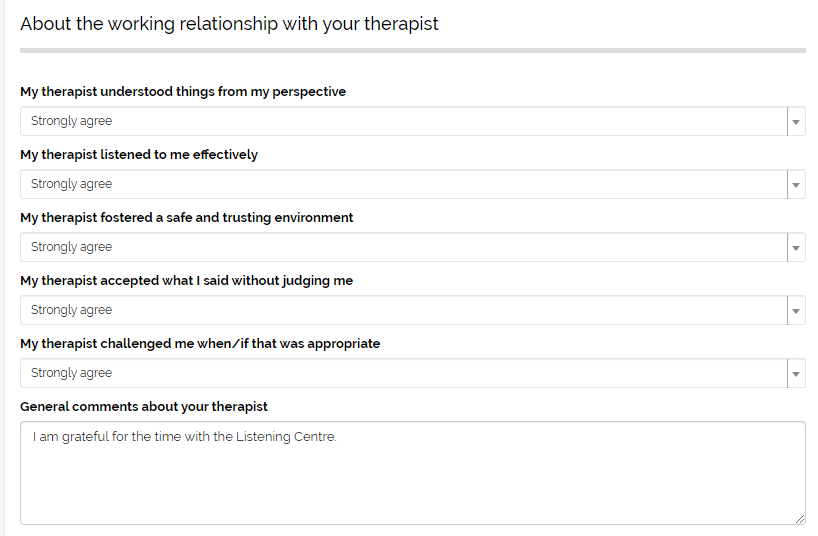
Benefits of Building Your Own Hospital CRM
If you’ve been researching CRMs in healthcare for a while, you must have noticed that there are plenty of canned solutions on the market.
Some are inexpensive, while others require considerable investment. Our rough categorization of the available solutions is as follows:- General-purpose
- Adapted to healthcare
- Specialized for healthcare
- Custom-built
General-purpose systems were neither created with healthcare in mind nor adapted to the healthcare industry. Yet, they still position themselves as suitable for healthcare; you can see them in the healthcare CRM category on Capterra and other software review websites. Good examples of such generic solutions would be Pipedrive and Bitrix.
In the next category, we put well-known software companies that have adapted their products for the healthcare industry. A good example of this is Salesforce Health. They offer software with features that are specific to healthcare, such as integration with EHR, and a complete view of the patient.
By specialized medical CRMs, we mean the type of solutions that were built specifically for healthcare providers with their typical challenges in mind. You can further categorize the systems into general solutions for any type of medical organization (like HC1), to specific care like plastic surgery or dentistry (like Planet DDS (ex-Dovetail)).
Healthcare providers also have the option to build healthcare CRM from scratch. These solutions are built with a single organization in mind, to fit all its needs. For example, we’ve developed a medical CRM for a mental health organization that provides counseling services for employees.Want a custom solution that will fit all your needs?
Contact UsSo which one is the best for you?
As usual, the answer is - it depends. The factors are numerous, for instance:- What are you looking for in a CRM?
- What is your budget?
- Do you have a clear picture of what an ideal CRM would look like?
Let’s take a look at the pros and cons of each type of solution.
General-purposeThe general-purpose solutions can be rather cheap and easy to start with, but it is very unlikely that they’ll meet even half of your needs. Since they were not designed for your practice, or even for medicine in particular, you would have to do a lot of work to fit your processes into the system (while it should be the other way around). Here is a customer pipeline in Pipedrive; does it look anything like yours?
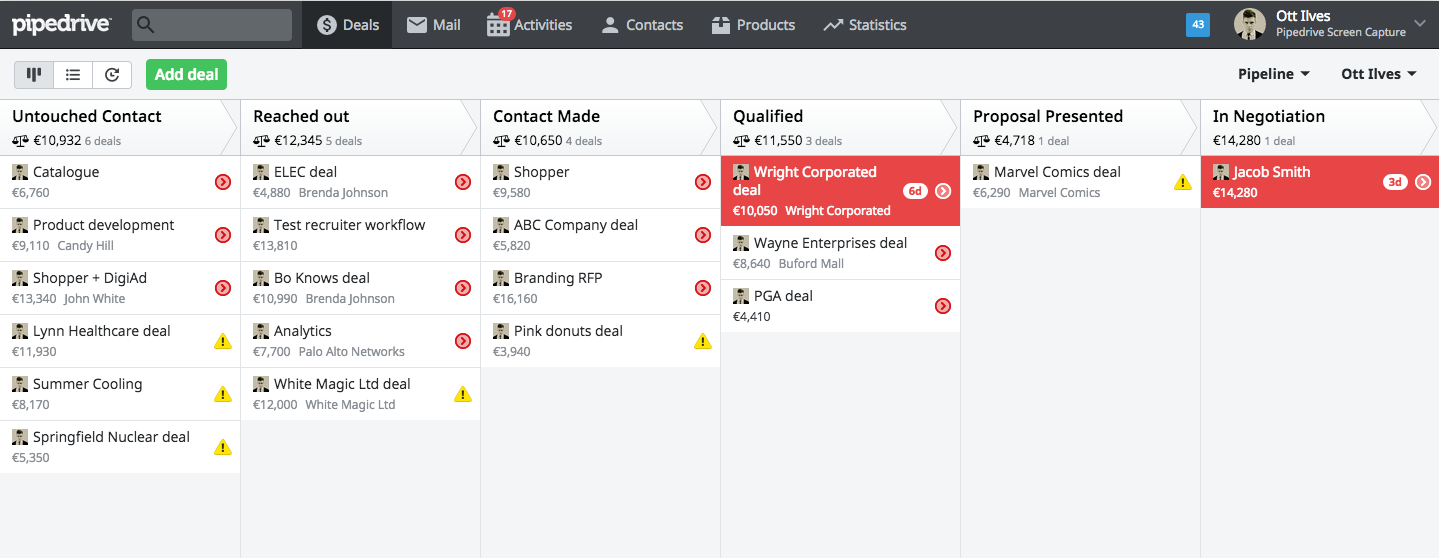
If it does, perfect! You’re lucky. This solution will probably be useful to you even if it doesn’t cover all your needs. More likely, however, it doesn’t resemble your processes at all.
Adapted and specialized solutionsLife gets a bit easier with adapted and specialized solutions. For example, Salesforce has done a great job developing useful functionality for hospitals and doctors. You will probably find it to be a better fit for your organization. However, does it satisfy all of your needs? If it doesn’t, then you might consider customization. Although you should beware not to customize more than 20% of the software; even 20% can be hard to maintain. When more than 20% of the system is modified, it turns into an uncontrollable and unreliable beast that is extremely expensive to maintain.
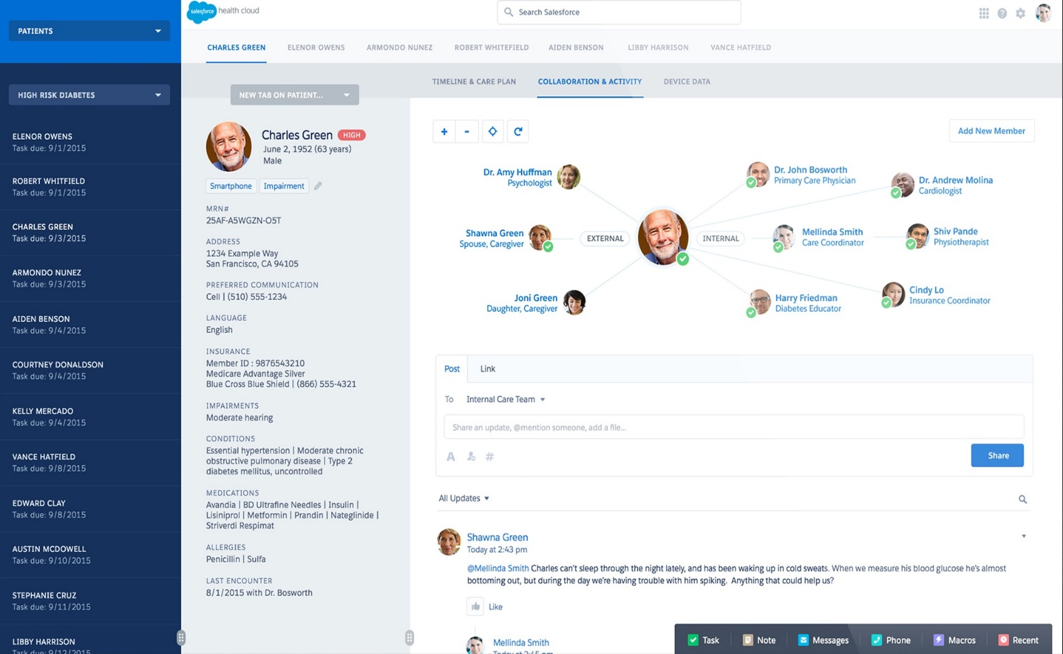
Last, but not least is an option to build medical CRM software from the ground up. The advantages of this option are that this system will perfectly fit your processes however unique they are. What’s more, it will be flexible -- it will be able to grow and change with you.
For example, we’ve built a custom CRM for a mental health organization that provides services for Employee Assistance Programs. This is not a typical mental health practice, as it has multiple stakeholders: patients, therapists, and client-companies that actually pay for the therapy. This and other peculiarities make the client’s organization unique and competitive. For this reason, they needed a unique solution.
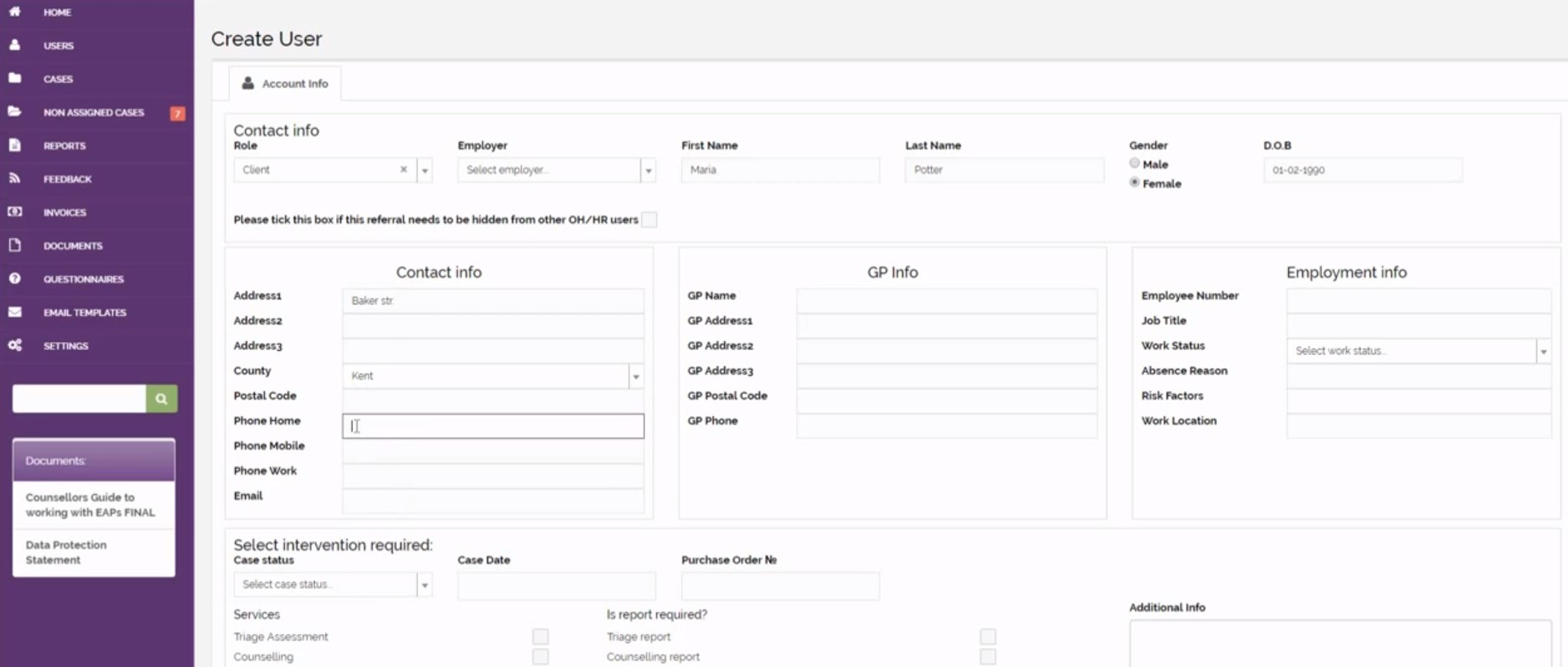
Another advantage is that, when done right, it is the most secure option of all. With custom solutions, only you and your development team will have access to the system and its code, while many people have access to off-the-shelf solutions.
The downside of bespoke software is that you need time and money to design and build it. This makes it more expensive at the launch phase, but it also means that it will be easier and cheaper to upgrade and maintain. Ease of modification and maintenance is an important advantage since your organization will likely change with time and so will its demands. Therefore, it is important to make your hospital CRM flexible enough to accommodate the inevitable changes.Comparison Table
| General Purpose | Adapted to Healthcare | Specialized Medical | Custom Medical | |
| Organizational fit | low | medium | medium/high | highest |
| Flexibility | low | low | low | high |
| Security | low | medium | medium | high |
| Cost | low | medium/high | medium/high | high |
| Time to launch | low | low | low | high |
How to Apply this in Your Practice
The number of patients a doctor has to see daily is ever increasing, while the time per visit is shrinking. At the same time, you must have a relationship with each patient and cater to his or her individual needs. It seems like a Sisyphean task.
That is why patient-centricity is an impossible endeavor without a CRM in the healthcare industry.
This tool can help you attract new patients, tailor services to better suit different patient groups, manage doctor-patient relationships, and make patients active participants in their healthcare by engaging them and measuring their satisfaction.
If you decide to go for a custom solution, we at Greenice would be happy to assist you. We have built several custom medical software systems that are being used by a variety of specialties including a physical therapy clinic, a mental health organization, a home healthcare service provider, and an assisted living facility. We can help you make a healthcare CRM solution that:
- Fits your needs 100%
- Is flexible to accommodate future changes
- Is secure and HIPAA compliant
Need to develop a CRM for the healthcare industry? We can help!
Contact UsRate this article!
Not rated

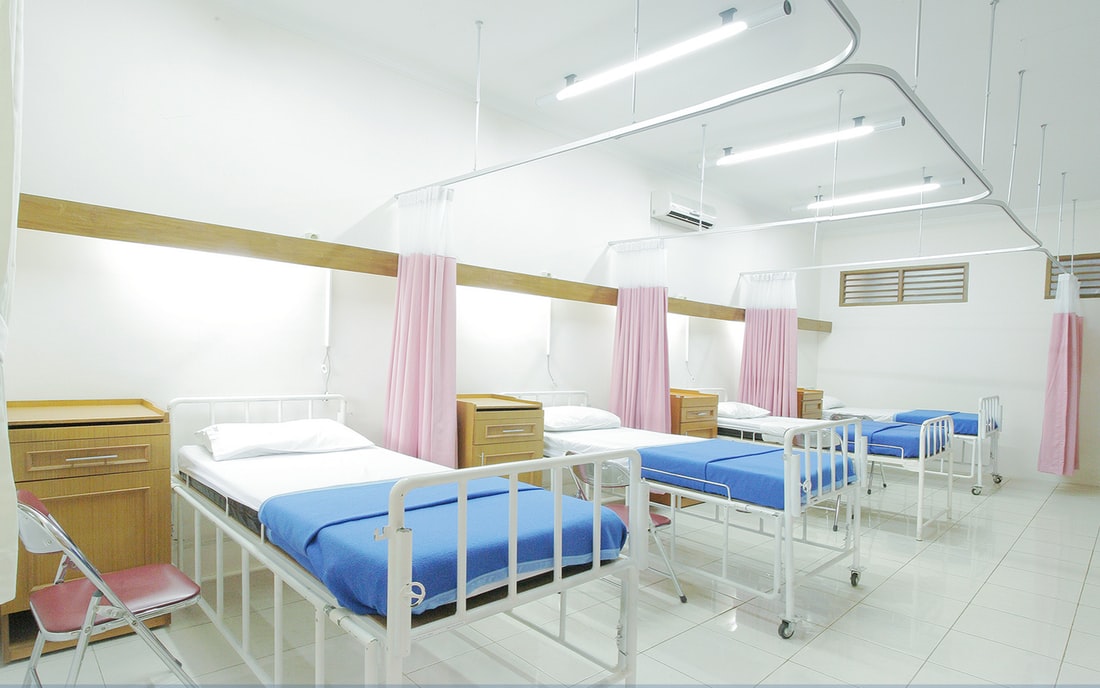











 Sign in with Google
Sign in with Google
Comments (0)